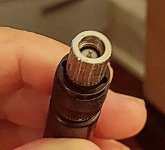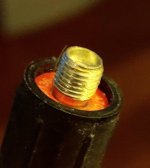On my SDS100, the Remtronix 843S consistently shows higher RSSI on steady carriers/tones, but the Remtronix 920S consistently produces clearer voice on ~800 MHz P25. Looking for explanations and best practices to measure this properly.
Currently in an "RF Disadvantaged" area in the mountains but near-ish to Denver, but no line of sight. HD TV antennas don't even work here.
I used the SDS100 in "Search with Scan" set. Once I found a lock, I swapped between the 3 antennas: Stock, 920S, and Remtronix 843S.
The 843S is expected to be the best all-around, an the 920S is expected to better at ~800 MHz.
What I found is that the 843S had better RSSI on what appeared to be unmodulated CW tones as I scanned, across everything. But when scanning on modulated signals, say around 800 MHz, the 920S did better at pulling in more conversations clearly.
So what are your thoughts on CW tone / carrier RSSI measurements vs. real-world modulated signal experiences with different antennas?
My theory is that the 843S is letting in more junk, so the RSSI is higher, but the 920S acts as a filter, increases SNR, but reduces RSSI.
???
Currently in an "RF Disadvantaged" area in the mountains but near-ish to Denver, but no line of sight. HD TV antennas don't even work here.
I used the SDS100 in "Search with Scan" set. Once I found a lock, I swapped between the 3 antennas: Stock, 920S, and Remtronix 843S.
The 843S is expected to be the best all-around, an the 920S is expected to better at ~800 MHz.
What I found is that the 843S had better RSSI on what appeared to be unmodulated CW tones as I scanned, across everything. But when scanning on modulated signals, say around 800 MHz, the 920S did better at pulling in more conversations clearly.
So what are your thoughts on CW tone / carrier RSSI measurements vs. real-world modulated signal experiences with different antennas?
My theory is that the 843S is letting in more junk, so the RSSI is higher, but the 920S acts as a filter, increases SNR, but reduces RSSI.
???



